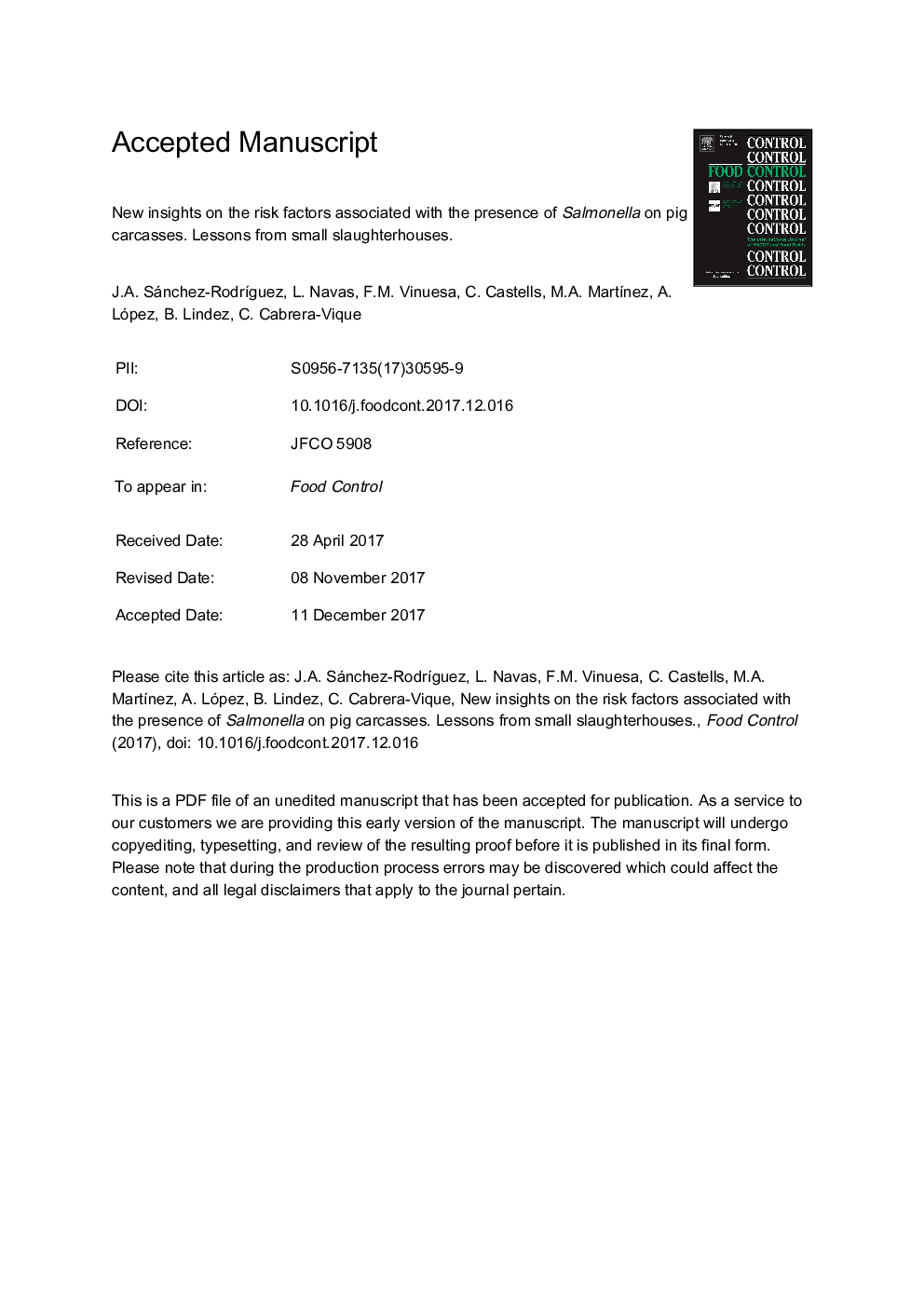| Article ID | Journal | Published Year | Pages | File Type |
|---|---|---|---|---|
| 8888061 | Food Control | 2018 | 27 Pages |
Abstract
This study analyses the prevalence of Salmonella on the surface of pig carcasses and identifies the serotypes present, in order to determine risk factors associated with the slaughter process. We analysed 393 samples, using the abrasive pad method, from pig carcasses obtained from three small slaughterhouses in southern Spain. Of the 393 samples, 45 (11.4%; 95% CI: 8.3-14.6%) were contaminated with Salmonella, with the main serotypes being S. Typhimurium (35.6%), S. Derby (31.1%) and S. Rissen (11.1%). In addition to this analysis, we examined 13 risk factors that have been described in previous research. The polishing stage, the use of pressurised water at the intermediate cleaning stage and the turbidity of the scalding water were the main risk factors found to be associated with the presence of Salmonella. Scalding the carcass using water with a turbidity exceeding 1000 NTU increases the risk of contamination by Salmonella (1001-2000 NTU, ORâ¯=â¯3.24, 95%CI: 1.12-9.35; >2000 NTU, ORâ¯=â¯6.26, 95%CI: 1.42-27.46), while the omission of the polishing stage (ORâ¯=â¯0.10; 95%CI: 0.01-0.87) and not using pressurised water in an intermediate cleaning process (ORâ¯=â¯0.09, 95%CI: 0.01-0.48) decrease the risk of contamination by this pathogen.
Related Topics
Life Sciences
Agricultural and Biological Sciences
Food Science
Authors
J.A. Sánchez-RodrÃguez, L. Navas, F.M. Vinuesa, C. Castells, M.A. MartÃnez, A. López, B. Lindez, C. Cabrera-Vique,
